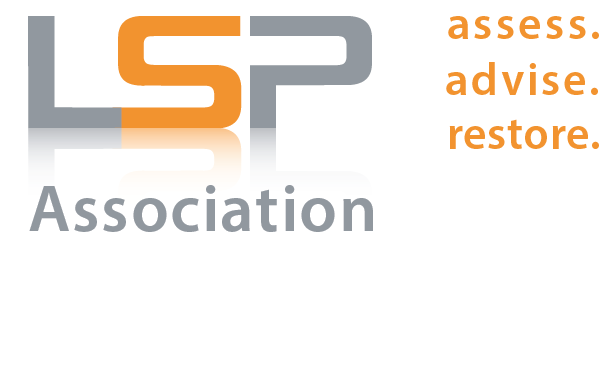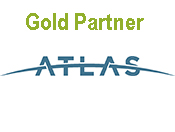The Loss Prevention Committee's Look at the MassDEP Audit ProcessBy: The LSPA's Loss Prevention Committee Since the beginning of the privatized program, one of the primary tasks of the LSPA’s Loss Prevention Committee (LPC) has been to review Notices of Audit Findings (NOAFs) issued by the Massachusetts Department of Environmental Protection (MassDEP). The audits are a key component of the privatized cleanup program and the NOAFs are a window into understanding how MassDEP evaluates the work done by LSPs. In prior years, the LPC reviewed a large number, if not most, of the NOAFs issued by MassDEP in the prior fiscal year. We looked for practice tips, trends, emerging issues, interesting case studies, and differences among the MassDEP regions. We also looked for what appeared to be errors in MassDEP’s use of authority; after all, we want to ensure that LSPs are treated fairly. During these reviews we primarily considered the NOAF itself and rarely looked at the underlying documents. As such, our reviews were necessarily limited. Nonetheless, we found it to be a useful exercise and we’ve shared the results of our reviews each year with the LSPA membership through newsletter articles. This year, the LPC elected to modify its approach to NOAF reviews. After considering what form this year’s approach would take, including root cause analyses and the use of hypothetical case models, the LPC decided to use a single NOAF to illustrate key features of MassDEP’s audit process. Our objectives were to demonstrate how MassDEP screens sites through audits and to promote the use of MassDEP’s audit checklists by LSPs early in the process to prevent violations. Consequently, the LPC completed an audit checklist for the documents underlying a single NOAF/Notice of Noncompliance (NON). This article reports on the results of the screening and provides suggestions on how LSP submittals can meet the challenges of a MassDEP audit. The site selected for this case study is located within a mixed-use industrial/commercial/residential area. Historically, chlorinated volatile organic compounds (CVOCs), including trichloroethene (TCE), were released to soil and groundwater from a printed circuit production facility by means of a leaking sewer line. During a Phase II Comprehensive Site Assessment (Phase II), a 72-hour notification was made and an Immediate Response Action (IRA) was initiated in response to groundwater impacts detected in a monitoring well proximate to an occupied residence. The IRA consisted of the installation of monitoring wells within 30 feet of other residences, indoor air sampling in occupied residences, patching of cracks in basement walls, and sealing of sub-grade walls and floors. No residential sub-slab soil gas sampling was proposed. The IRA was conducted in accordance with a revised IRA Plan submitted to MassDEP and conditionally approved by MassDEP in writing. The results of the IRA were summarized in an IRA Completion Report (IRAC), which concluded that the patching and sealing conducted in four residential basements had reduced the total VOC levels in each of those basements. The post-patching/sealing monitoring consisted of a single indoor air sampling event in each basement; no post-patching/sealing monitoring was performed in occupied first floor rooms of the residences. The IRAC concluded that based on these results, site conditions were stable and warranted completion of the IRA. One year later, MassDEP issued an NOAF that focused on both the IRAC and the Phase II Report, which had been completed prior to filing the IRAC. The NOAF was based on a Level 1 Screening Audit of submitted documents. No site visit was performed. In the NOAF, which was accompanied by a NON, MassDEP:
The LPC reviewed the IRAC and Phase II Report, with a focus on the IRAC because not all elements of the Phase II Report were accessible for review. We then completed a Level 1 Audit Screening Form for Preliminary Response Actions as applied to the IRAC using MassDEP’s 2006 version of the audit screening form. It should be noted that MassDEP has developed a new multi-purpose checklist for Level 1 screening audits for submittals received after June 20, 2014. The new form combines the separate 2006 checklists for Preliminary Response Actions, Comprehensive Response Actions, and Response Action Outcomes into one checklist. It is also updated to address the new types of submittals under the revised Massachusetts Contingency Plan (MCP). Level 1 audit screening forms can be found at MassDEP’s website here. Because the subject IRAC was submitted in 2012, we used the 2006 checklist as a screening tool. Level 1 audit screening forms contain flags assigned to selected entries. As MassDEP indicated during a 2013 LSPA membership meeting presentation, if a flagged condition is checked, the auditor will discuss the finding with his or her audit section chief. The likely outcome is that a Level 2 or Level 3 audit will be conducted. In the case of the subject IRAC, during our review we checked off the Site Concern titled “Site contaminants impacting indoor air,” which is a flagged condition in the Level 1 audit screening form. This condition does not necessarily identify a violation but it does raise concern of exposure, prompting an auditor to examine more closely response actions addressing the indoor air pathway. Based on the information available to us, we checked the following subsequent screening form entries:
In summary, our use of the Level 1 audit screening form identified the same concerns as documented in the NOAF/NON. However, a cursory completion of the checklist does not always tell the entire story. In defense of the subject IRAC, the response actions performed during the IRA were presented in a revised IRA Plan that was conditionally approved by MassDEP. The proposed response actions, which were approved by MassDEP, did not provide for sub-slab soil vapor sampling and did not include multiple monitoring events following basement patching and sealing. The conditional approval was issued shortly after release of the December 2011 Interim Final Vapor Intrusion Guidance. Granted, an LSP is required to comply with current guidance or justify a different course of action, but in this case some of the violations cited in the NOAF could have been avoided if MassDEP had identified concerns in its conditional approval. Instead, the approval was silent on these aspects of monitoring. Our insight gained from conducting this exercise is that the audit checklists are a valuable planning tool throughout the course of response actions because they identify those specific elements by which submittals will be evaluated. For LSPs, they identify the strengths and weaknesses of response actions and consequently the need for further action or careful explanation as to the course of action chosen. Furthermore, MassDEP provides that it is very likely that some form of MassDEP review will occur at a site at some time in its history, be it an informal review or database screening (not technically audits) or formal audit (Level 1 screening, Level 2 site inspection, or Level 3 full file review). Routine referral to and compliance with the checklists during the course of response actions will therefore likely be critical at some time in a site’s history. In addition, and independent of our case study, in its presentation at the 2013 LSPA membership meeting MassDEP stated that a critical step that LSPs can take to reduce negative findings in audits is to submit documents that are well-organized, clear, and concise, and that provide convincing justification for site decisions. In short, persuading an auditor that the response actions comply with the MCP begins with telling a story that he or she can readily follow. Lastly, a simple way to avoid, postpone, or reduce the sting of an audit is to comply with the administrative requirements of document submittals. Submittals that are made late and without properly completed BWSC forms will raise flags within MassDEP’s database that could prompt further review. In addition, the continued neglect of administrative requirements could signify a pattern of noncompliance resulting in the performance of a Level 2 or 3 audit. |

































